
A tradition related to food in Easter is eating magiritsa! After the egg cracking, Orthodox people start eating the traditional magiritsa! This dish contains the offal of the lamb just before it is roasted, along with some green vegetables (lettuce, dill and onion) boiled together. It is traditional to eat magiritsa because it symbolizes the end of the 40-day fast Greek Orthodox people have right before this day in order to mourn the death of Jesus.
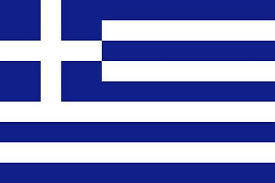
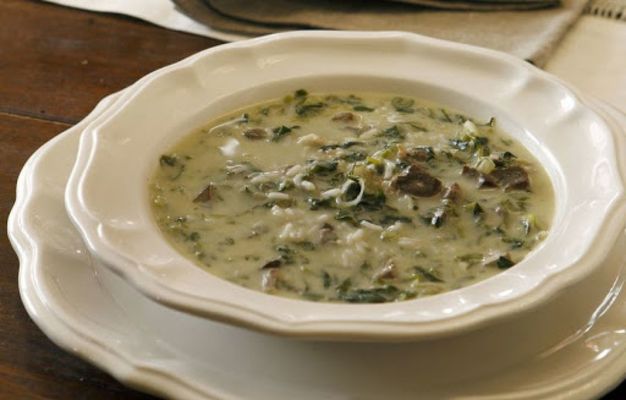
Source:
Ingedients
1 kg liver, lamb
2 lemon slices
2 bay leaves
Salt
10-15 peppercorns
4-5 tablespoons olive oil
1 onion
1 s. Garlic
2 kg Rosemary
50 g white wine
1 chicken cube
1 1/2 liters water
5-6 spring onions
1 lettuce
1/4 bunch dill
100 g glazed rice
Process
1. Place the pot with water over high heat to boil.
2. Add the liver, lemon slices, bay leaves, salt, peppercorns and bring to the boil for 10-15 minutes.
3. Remove the foam from time to time. Drain and discard the water.
4. Place the same pot over high heat again and add 3 tablespoons of olive oil.
5. Cut the onion, garlic into small pieces and add them to the pot. Add the rosemary.
6. Cut the liver into small pieces, put them in the pot and sauté for 8-10 minutes.
7. Turn off the wine, add the cube, water, close the lid and boil over medium heat for 30-40 minutes.
8. Then cut the spring onions into rounds, lettuce and dill into large pieces and put them in the pot. The green part of the onions and 1 tablespoons of dill, keep them aside.
9. Add the rice, close the lid and boil over medium heat for 10-15 minutes.
Source:
CHICKPEAS AND SPINACH STEW:
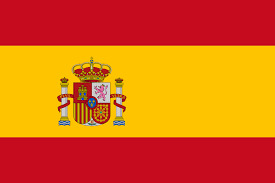
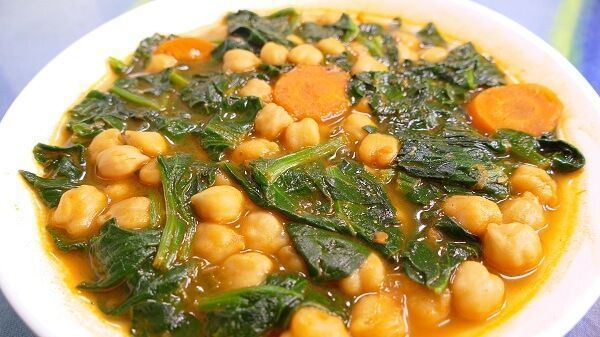

- 1 Leek
- 2 Tomatoes
- 1 Onion
- 1Italian green pepper
- 300 g Cod
- 2 Eggs
- 300 g chickpeas
- a bunch of Fresh spinach
- Cook the eggs in plenty of water for 10 to 12 minutes. Peel and reserve. Cut the cod slices. Cut the spinach into small pieces. Make a sauce with onion and green pepper. Add a chopped leek and fry for ten minutes. Add the tomato and the fish stock. Blend the sauce with the blender and leave it fine, returning it to the saucepan. When it boils again, add the spinach and cod, letting everything boil for about five minutes. Add the cooked chickpeas and let them cook for a minute. If you use dried chickpeas, you will have to soak them overnight and cook them for two hours over a low heat or 18 minutes in a speed cooker. They are then used as we have just indicated. We turn off the heat, shake the saucepan by grasping it by the handles and reposition the contents. We place the hard-boiled eggs cut into quarters over the rest of the ingredients and we take them to the table in the same saucepan in which they were cooked,serving the diners there.
GALAKTOBOYREKO or milk pie is one of the sweats that we eat on Easter Sunday , and its really delisious .

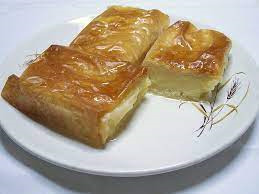
IMPLEMENTATION
Pour the milk into a sausepan and put it on the fire . Beat the eggs and the sugar in the bowl of the mixer , add the corn flour , the semolina and throw them in the pot . Stir constantly until the cream sets . Add the vanilla butter , stir and remove the pan from the heat . Allow the cream to cool . You must stir the cream so that it does not form a crust .
Grease a pan with butter and spread the halves of the leaves that protrude from the pan and grease them well with butter . Spread the remaining leaves , smearing them again one by one and turning them inwards .
Cut into pieces and grease the surface well with butter , sprinkle with a little water and bake in a preheated oven at 170 degrees for 45 to 50 minutes .
Boil the sugar with the water and the lemon peel in sausepan for 8 minutes . Add the lemon juice and let the syrup cool . Take the milk pudding out of the oven and add the cold syrup little by little . After it cools down , cut it into pieces . Bon appetit !
COD OMELETTE
Who doesn’t like a good omelette? A Spanish delicacy. In addition to the typical potato omelette or a stuffed omelette, many of them can be made with the most varied ingredients, and certain fish such as hake or cod also fit here. It is a great recipe to use and it triumphs at Easter in all bars and restaurants in Spain

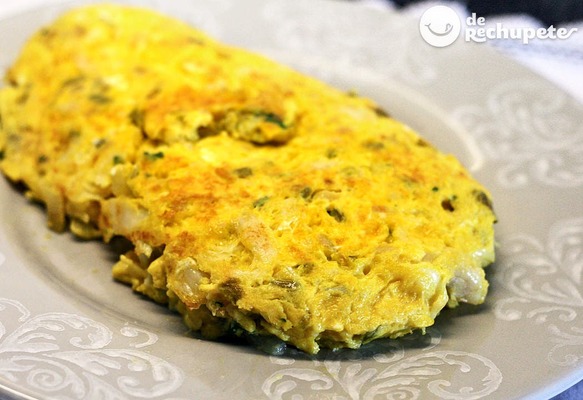
Once the vegetables are poached, add the cod and sauté the whole for 3-4 minutes. Finely chop the fresh parsley and sprinkle on top. We beat the eggs and lightly salt them (a pinch will do). We toss them into the pan and let them set over medium heat. We are folding the omelette on itself, as if we were preparing a French omelette. We cook it on both sides and remove it when it reaches the point that we like the most, more or less curdled. My recommendation is that you do not spend too much time, you enjoy it more if it is very tender. With care, we transfer it to a plate or source and it is ready to taste. You can accompany it with the salad that you like the most, for example one with tender lamb’s lettuce shoots and arugula.
Lenten Spinach Pie , one delicious lent food.

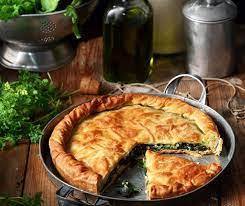
For the dough
— 400 g hard flour, or all purposes
— 100 ml olive oil
— 10 g granulated sugar
— 11/2 teaspoon (s) olive oil
— 210 ml water
— 200 ml olive oil, for bruhing
For the filling
— 2 tablespoon (s) olive oil
— 3 spring onions, coarsely chopped
— 1 kilo spinach
— 1/2 banch hartwort
— 1 bunch hartwort
— 4 spring (s) oregano, fresh
— 1/3 bunch dill
— lemon zest, of 1 lemon
— 500 g feta cheese, crumble
— 200 g cream cheese
— pepper, a generous amount
— salt .
In the north of Spain this dessert is almost a religion and has many followers. Although his invention was surely taking advantage of the most common ingredients in the kitchen: milk, flour and eggs.

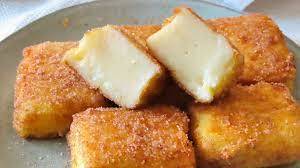
- 800 ml of whole milk.
- 150 gr of sugar.
- 70 gr of cornstarch, and a little more to coat.
- A cinnamon stick.
- 1 lemon
- 1 beaten egg.
- Cinnamon powder and more sugar to coat the fried milk at the end.
- Peel a lemon trying to keep the skin as little white as possible so that it does not become bitter. The first thing we are going to do is infuse the milk.
- Reserve 200 ml of the 800 ml, in the fridge and put the remaining 600 ml in a saucepan over medium-high heat together with the cinnamon stick and the lemon peel until it boils.
- Once it has boiled, remove the saucepan from the heat , add the sugar and stir everything.
- Let it sit for at least 15 minutes, and if you keep it covered, all the better. Remove the cinnamon stick and lemon peel from the milk.
- Mix the cornstarch with the 200 ml of milk that you had reserved until it is perfectly dissolved.
- Now put the saucepan back on the fire at medium temperature and as soon as it boils, pour this mixture into the saucepan with the infused milk, turn the heat to low and stir it without stopping until it thickens, it will take about 15 or 20 minutes
- Now place the mixture in a rectangular container as you can see in the photographs, and it is very important that you cover it with plastic wrap so that it is in contact and completely stuck with the surface of the mixture to prevent it from hardening.
- Let the mixture rest in the fridge for at least 3 hours so that it is well curdled and with the right texture.
- After having rested, cut it into the number of portions you want (for example 6 or 8). In a pan or saucepan add plenty of oil and put the heat on high so that it is ready to fry. Beat an egg and pass each portion of fried milk through cornstarch and then through the egg.
- Go frying the portions of fried milk when the oil is hot, turning them so that they finish browned on both sides.
- Do not make many servings at the same time so that the oil does not drop in temperature, this will ensure a perfect frying, remove them to a dish with kitchen paper to absorb the excess oil.
- Mix equal parts cinnamon and sugar in a plate, and while the portions are still hot, cover them in that mixture.
- Sunflower or seed oil
Stuffed vegetables
![]()

1 green pepper
1 red pepper
1 yellow pepper
2 large tomatoes
2 small–medium aubergines
1 green courgette
1 yellow courgette
6 tbsp olive oil
1 large onion, finely chopped
2 garlic cloves, finely chopped
2½ tbsp tomato purée
400g/14oz long-grain rice, rinsed
250ml/9fl oz vegetable stock
large handful flatleaf parsley
large handful fresh mint
1 tsp dried oregano
implementation
- Preheat the oven to 160C/140C Fan/Gas 3.
- Start by preparing the vegetables for stuffing. Cut the tops off the peppers and tomatoes to create lids, set the tops aside. Scoop out the pepper seeds and discard. Scoop out the tomato flesh and seeds and reserve. Cut the aubergines and courgettes lengthways and scoop out the seeds and flesh inside, leaving a boat-shaped shell ready to fill. Add the flesh from the courgettes and aubergines to the tomato flesh and seeds and chop well.
- In a large pan over a medium heat, warm 3 tablespoons of the olive oil and fry the onion and garlic for 3–5 minutes until soft. Add the chopped vegetable flesh and the tomato purée. Cook for about 10 minutes until softened.
- Add the rice and 150ml/5fl oz of the vegetable stock, raise to a simmer and and cook for 10 minutes, stirring occasionally. Season with salt and pepper and stir in the herbs and chilli flakes.
- Arrange the vegetable shells on a roasting tin or ovenproof dish and spoon the rice mixture into them. Place the lids on the peppers and tomatoes and drizzle them all with the remaining olive oil.
- Pour the remaining stock into the tin, cover with foil and bake for 1 hour. Remove the foil and bake for another 15–30 minutes until the vegetables and rice are cooked.
- Serve hot, warm or cold.
⅛ tsp chilli flakes
salt and freshly ground black pepper

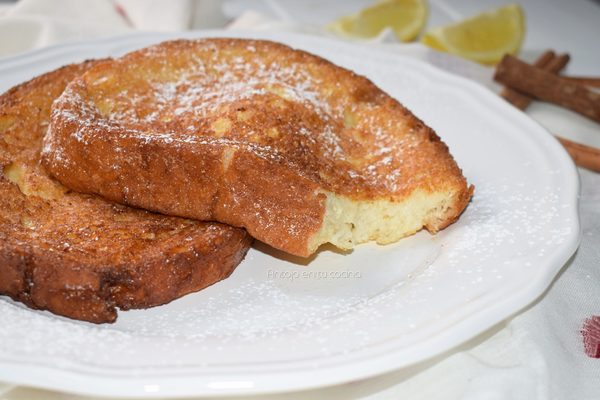
- 1 loaf of bread from the day before or a specific loaf for torrijas (sold in almost all bakeries).
- 1 and 12 liters of whole milk.
- 5 eggs.
- 1 stick of cinnamon-branch, 1 vanilla bean, the zest of half a lemon
- 300 g of white sugar and 1 tablespoon of ground cinnamon.
- 1/2 liters of mild extra virgin olive oil
- In a saucepan we put the milk, the lemon zest without the white part, the cinnamon stick, the vanilla bean, and the 3 tablespoons of sugar. Heat until bringing to a boil and let cool. Cut the bread into 1.5 cm thick slices, bathe them in the infused milk and reserve them on a plate. We put the oil to heat over medium-high heat. We beat the eggs very well. We pass the torrijas by egg and being careful not to break them we put them in the hot oil. We fry them between 2 and 3 minutes on each side until they are golden brown and we remove them by draining them very well. Finally, when we have fried them all, we mix the cup of sugar with the cinnamon powder, batter and serve. If we coat them while they are still hot, a kind of syrup will form and if we wait for them to cool down a bit, the sugar grains will continue to be appreciated.
Greek sweet bread – Tsoureki – Τσουρέκι

Τhe greek sweet bread is made in the Easter.
If you haven’t tried tsoureki (Greek Easter bread) before, then you are certainly missing out! Soft, fluffy, with a beautiful brown semi-soft crust and an amazing stringy texture.
While this Greek Easter bread (tsoureki) is traditionally served in Easter and the three braids symbolise the Holy Trinity, it is also very popular throughout the year as a delicious mid day snack, breakfast or tea or coffee companion.
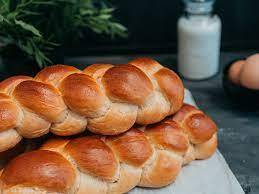
For the bun
700 gr. flour for bun
orange zest, from 1 orange
1/4 tbsp. gum
1/2 tbsp. mahalepi
1/4 tbsp. cardamom (kakoule)
100 gr. granulated sugar
200 gr. Orange juice
120 gr. seed oil
1 pinch of salt
1 tbsp. vanilla extract
In a mortar we put the mastic, the mahlep, the cardamom, 1 tbsp. from the sugar and beat well until the ingredients are broken.
Add the rest of the flour, the orange zest and the spices to the bucket with the sourdough.
Put the orange juice,
the seed oil, the sugar, the salt, the vanilla in a bowl and mix with a spoon until the sugar melts.
Put the ingredients from the bowl in the bucket of the mixer with the rest of the ingredients and beat on medium speed with the hook for 8-10 minutes until you
have an elastic dough.
Put the dough in a floured bowl, sprinkle the dough with a little flour, cover with cling film and leave for about 1 hour until it doubles in volume.
Divide the dough into four pieces and shape each piece into a 40-50 cm strip. Join the edges and make sure they stick well.
Shape into a braid by placing the fourth braid over the second, the first over the third and the second over the third. (4-2, 1-3, 2-3).
We follow the process until we have a large braid.
Put in a pan with oil paste, cover with a towel and leave to rise for 20-30 minutes.
Preheat the oven to 180o C in air.
In a cup, dilute the honey with water and spread the whole surface of the bun with a brush.
Sprinkle with almonds and bake for 35-40 minutes.
Remove and serve .
COD FRITTERS
![]()
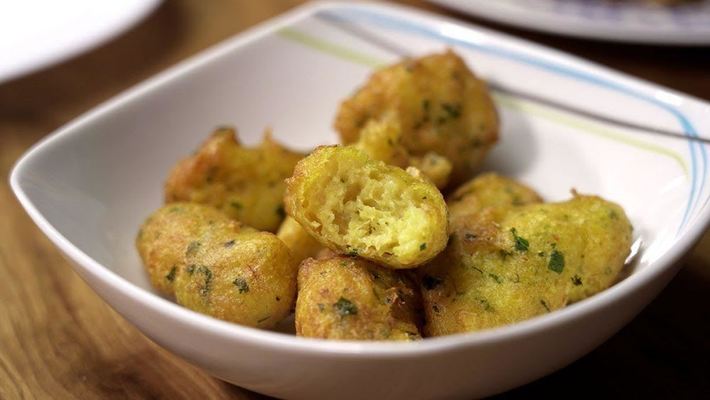
• 250 g of desalted flaked cod
• 1 handful of fresh parsley
• 3 garlic cloves
• 1 egg
• 125 g of flour
• 250 ml of beer
• a few strands of saffron (optional)
• Salt and pepper
• Oil
1.- In a large bowl we put the egg, beat it well and then add the flour and beer. It is advisable that the beer is very cold, in this way, when frying it,the cod fritters will be more crisp. Alternatively, you can add cold water and baking powder instead. Season with salt and pepper and optionally add the saffron. We beat, with the help of a fork or a rod, until we have a uniform dough.
2.- Once this is done, we add the crumbled cod to the mixture, which must previously be desalted. To desalinate it, put it in water and change it every 8 hours. Repeat this process for 2 days, and voila. We also add the finely chopped parsley and garlic. We mix again until everything is well integrated.
3.- In a frying pan with plenty of oil over a very high heat, we are going to add the mixture of our previous cod fritters spoon by spoon. There must be enough oil to cover the fritters completely. As you will see, the fritters will grow. Aftedone on the other side a couple of minutes turn them over, so that it is
4.- Once the cod fritters are fried and well browned, we put them on a platewith absorbent paper. They will have a great look! Ready to eat!
The start of Lent in Greece is – a bit ironically – defined by a large feast. On Clean Monday ,Καθαρά Δευτέρα in Greek, the whole country enjoys a traditional meal consisting of all the delicious dishes one is still allowed to eat during the forty-day fast.
Meat, eggs, fish, and dairy are out, so it’s a great time to focus on all the other delicacies of the sea. “Bloodless” seafood, like octopus, squid, mussels, shellfish, and fish roe are enjoyed along with beans, wild greens, and pickled goods in all shapes and forms.
Below is a recipe for an absolute must on your Clean Monday table.
TARAMOSALATA (FISH ROE DIP)
Tarama, which is needed for this recipe, is white or pink fish roe, usually from cod, carp, or mullet. Outside of Greece, you can usually find it in jars at Middle-Eastern markets.
![]()
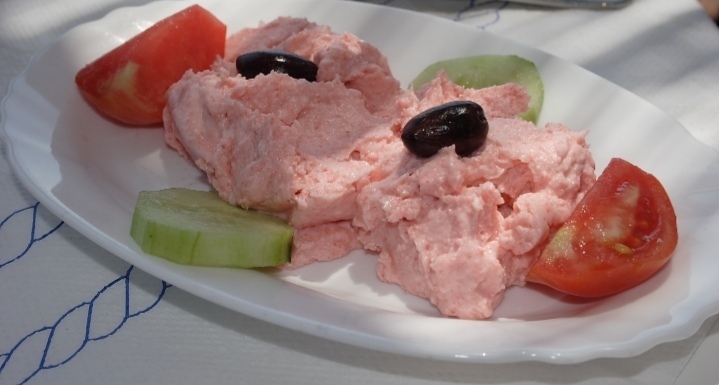
- In a large bowl, add the bread and water. Let it soak thoroughly.
- Line a separate bowl with a kitchen towel.
- Add the bread and water. Wrap the bread in the towel and wring to remove as much of the water as possible.
- Transfer to a bowl and set aside.
- In a food processor, add the onion, garlic and 200 g of water. Beat until completely pulverized.
- Transfer to a bowl lined with a kitchen towel and wring to remove as much of the liquid as possible.
- Place back in food processor and add the fish roe, soaked bread, pepper, lemon juice and lemon zest (2-3 lemons depending on their acidity and your preferences).
- Beat for 3-4 minutes until the mixture is completely combined and fluffy.
- Add the olive oil and vegetable oil in a slow steady stream while beating.
- If your food processor doesn’t have an opening, add the oils in 50 g batches for each type of oil.
- Taste and adjust lemon to your liking.
- Serve with olive oil, pepper, thyme and olives.
- 300 g bread, crust-less
- 1,2 liters water
- 1 onion
- 2 clove(s) of garlic
- 200 g fish roe, white
- lemon juice, of 2-3 lemons
- lemon zest, of 2-3 lemons
- 100 g olive oil
- 200 g seed oil
- pepper
To serve
- olives, some
- 1 tablespoon(s) olive oil
- pepper
- 1 tablespoon(s) thyme, fresh
Published: May 7, 2019
Latest Revision: Jul 27, 2021
Ourboox Unique Identifier: OB-622220
Copyright © 2019







